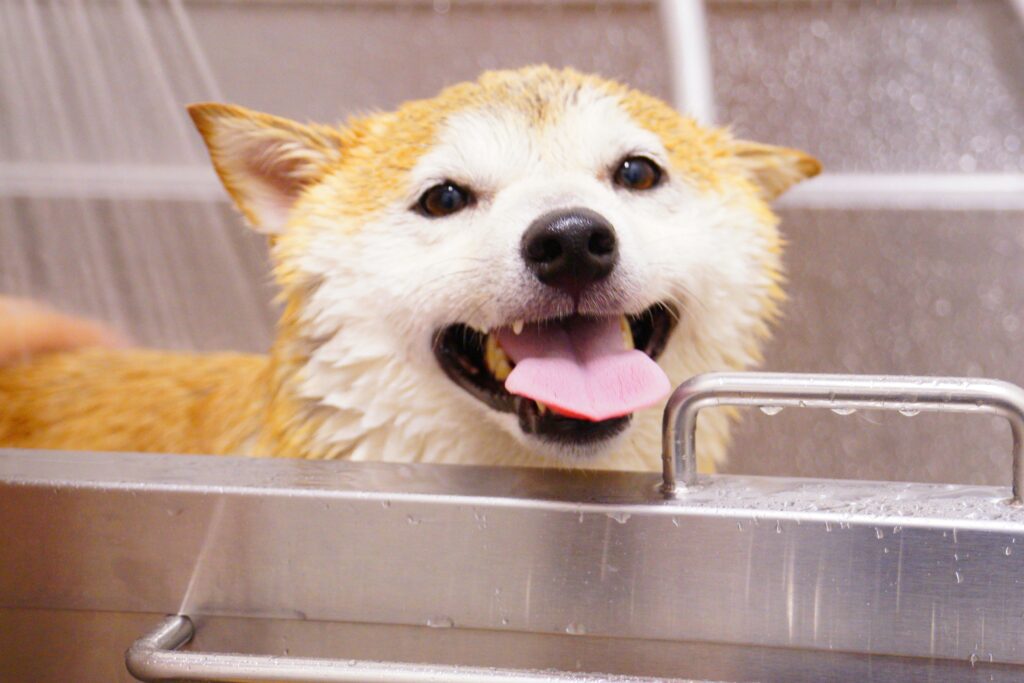
Bath time can be a stressful experience for many puppies, especially those who are new to water or uncertain about unfamiliar sounds and handling. But with the right approach, you can transform bath time from a dreaded event into a calming, even enjoyable, routine.
Whether your puppy squirms, hides, or whines at the sight of the tub, this guide will help you learn how to make bath time easier for nervous puppies while building trust and confidence with each wash.
1. Start Slowly and Introduce the Bath Area Early
One of the most effective ways to help your puppy feel comfortable during baths is to start early and take it slow. Before you even turn on the water, spend a few days letting your puppy explore the bathroom or bathing area. Place treats or toys near the tub or sink and reward your puppy for calmly investigating the space.
Let them sit in the empty tub or on a bath mat for a few minutes without water. This helps them associate the area with positive experiences instead of fear.
2. Choose the Right Location and Equipment
Depending on your puppy’s size and temperament, choose a safe and secure place for bathing. A small breed may be easier to bathe in a sink, while larger puppies might need a bathtub or even a handheld shower outside during warmer months.
Make sure you have everything you need within reach before starting:
- Puppy-safe shampoo
- Soft towels
- A non-slip mat or towel for stability
- Cup or sprayer for gentle rinsing
- Detangler or brush if needed
Preparing ahead of time ensures you’re calm and confident — which helps your puppy stay relaxed too.
3. Keep Water Temperature Lukewarm
Puppies are more sensitive to temperature than adult dogs. Use lukewarm water to avoid shocking their system or making them uncomfortable. Test the water on your wrist — it should feel neutral, not hot or cold.
Always start by gently wetting their paws and slowly move up toward their back. Avoid pouring water directly over the head or ears, which can be overwhelming for nervous pups.
4. Use a Calm, Gentle Voice Throughout
Speak softly and reassuringly to your puppy throughout the bath. Your voice can be a powerful tool to soothe and reassure them, especially during a stressful situation.
Avoid sudden movements or loud reactions — if your puppy gets scared or tries to jump out, calmly guide them back and praise them for staying.
5. Reward, Reward, Reward
Make bath time a reward-based experience. Bring plenty of small, high-value treats and give them frequently throughout the process. Praise your puppy when they stay still, step into the tub, or tolerate being rinsed.
If your puppy has a favorite toy, consider using it as a distraction during bathing. Some owners smear a bit of dog-safe peanut butter on the wall to keep puppies occupied while being washed.
6. Be Mindful of the Head and Ears
Water in the ears or soap in the eyes can turn bath time into a nightmare. When rinsing your puppy’s face, use a damp cloth rather than spraying or pouring water directly. Tilt their head slightly backward and cup your hand around their ears to avoid getting them wet.
If your puppy already dislikes the bath, accidentally causing discomfort with water in their ears may make them even more nervous next time.
7. Keep Baths Short and Sweet
Especially with nervous puppies, try to keep the bath under 10 minutes. A quick rinse and scrub are all most puppies need. Long baths can increase anxiety and make future grooming sessions more difficult.
If your puppy becomes overly distressed, it’s okay to pause and try again later. Forcing a full bath while they’re panicking can set back your progress.
8. Dry Gently and Thoroughly
Once the bath is over, use a soft towel to gently pat your puppy dry. Avoid rubbing too vigorously, which can be irritating. If your puppy tolerates it, a low-noise pet dryer on a cool setting can speed up the process — but always introduce it slowly and from a distance.
Make sure your puppy is completely dry before going outside, especially during colder weather, to avoid chills or skin irritation.
9. Stick to a Routine
Consistency builds comfort. Try to bathe your puppy around the same time of day and follow the same steps each time. This predictability helps nervous puppies feel more secure, as they learn what to expect.
Bathing once every 3–4 weeks is usually enough unless your puppy gets especially dirty or has a skin condition that requires more frequent care.
10. Consider Professional Help if Needed
If your puppy continues to show signs of extreme stress, consider working with a professional groomer or dog trainer. Some groomers offer “puppy intro” sessions to get young dogs used to grooming tools and environments.
A professional can help desensitize your puppy to bathing in a safe, structured way, especially if your puppy has had a traumatic experience in the past.
Conclusion
Learning how to make bath time easier for nervous puppies takes a little patience, consistency, and a lot of praise — but it’s worth it. A calm bath routine not only keeps your pup clean and healthy but also strengthens the bond between you and your furry companion.
By creating positive associations with bath time early on, you’re setting your puppy up for a lifetime of happy, stress-free grooming. 🛁🐾
